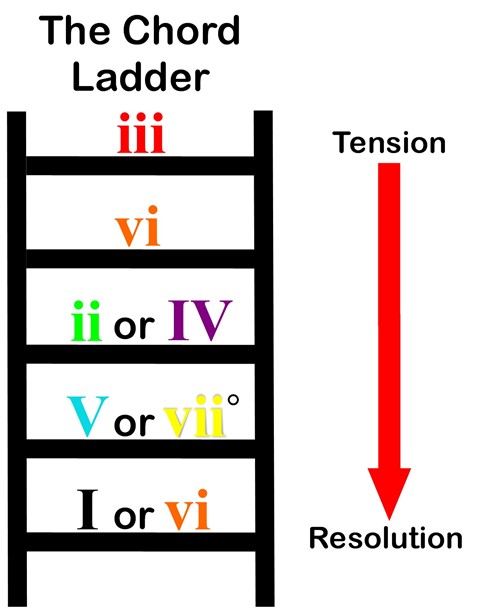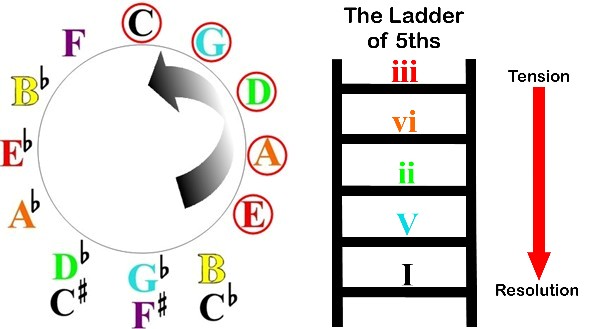The following two tabs change content below.


Greg Lee
Hi, my name is Greg Lee. I'm the creator of the Color Score Professional/Visual Chord Learning System. I love to share ideas and concepts about piano and keyboard playing in all styles of music. I believe the key to learning is having fun and making complicated things simple with visual tools and illustrations.
Latest posts by Greg Lee (see all)
- What is a minor/Major 7 Chord? - October 26, 2023
- 7 Chord Substitutions that Professionals Use - October 19, 2023
- 5 Simple Chord Tricks to Sound Amazing - October 5, 2023


 Each step on the ladder may reference one or more chords. When a step has more than one chord, it means that they can substitute for each other.
Each step on the ladder may reference one or more chords. When a step has more than one chord, it means that they can substitute for each other.




 The circular chord progression is the 3-6-2-5-1 progression. Listen as you play this chord progression in the key of C Major
The circular chord progression is the 3-6-2-5-1 progression. Listen as you play this chord progression in the key of C Major







